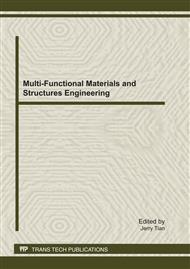p.263
p.268
p.274
p.279
p.284
p.290
p.296
p.304
p.310
Spatial and Temporal Analysis of MODIS Vegetable Index of Different Grassland Styles
Abstract:
This paper mainly reports the annual spatial variation of primary types of the grass in the study area through MODIS NDVI and EVI. First of all, we analyze each type invariably characteristic curve of monthly vegetation index in the area severally and analyze the real-time characteristics about different vegetation index of the same type to study the feature of grass in each growth stage. It turned out that the variation trend of each vegetation index is identical in general and the variation of each month is a bit difference. The value of NDVI is bigger than EVI and so is the amplitude of fluctuation. The vegetation index of grass achieves the maximum value in July except the Stenothermal desert grass which achieves it in August, and descends to the minimum in February. It turned out that the yield is filled for grass in July and August. Then we use the image taken in July to analyze the spatial status and take the density segmentation by Maximum synthesis and take two kind of image. Results show that two kinds of vegetation index reflect grass type of spatial continuity and difference. The grading of EVI and NDVI is able to reflect adequately grass type of spatial distribution, and EVI reflects a gradual change of grassland types of space more than NDVI. According to the main grass type vegetation index analysis of the spatial and temporal variation characteristics of grassland, accurate embodies the basic condition can type for further grass information extraction work and grassland dynamic monitoring research which provides the main material basis and basic work.
Info:
Periodical:
Pages:
284-289
Citation:
Online since:
July 2011
Authors:
Price:
Сopyright:
© 2011 Trans Tech Publications Ltd. All Rights Reserved
Share:
Citation:


